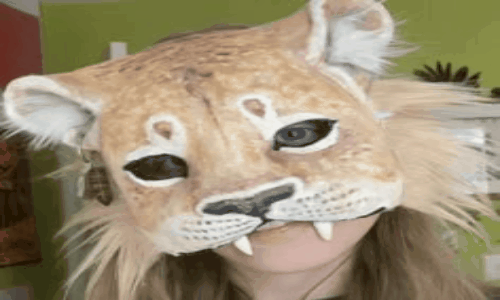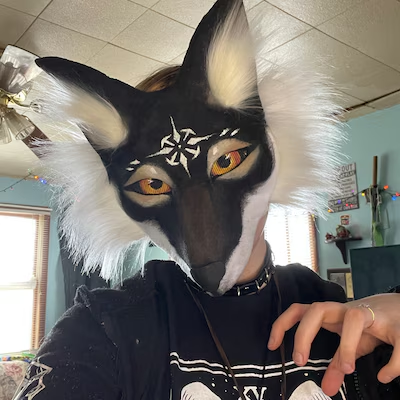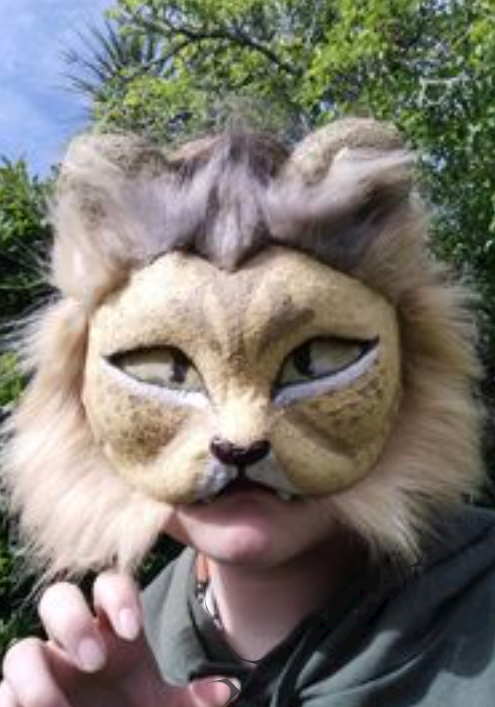Advertisements
Exploring the mysteries of the human mind has always been a fascinating journey, but few topics arouse as much curiosity as the universe of Therians.
Advertisements
These people have a unique connection with animals, claiming to feel a deep identification, whether on a spiritual, mental or even behavioral level. But what is really behind this concept?
And what leads someone to recognize themselves as a Therian in a society increasingly focused on human individuality?

The idea of Therians goes beyond a simple admiration for animals. For many, it is a visceral, almost indescribable experience that combines elements of personal identity, spirituality and instinctual behaviors.
Advertisements
This phenomenon, which has both historical and contemporary roots, raises questions about the symbolic and biological relationship between humans and the animal kingdom. Why do some people feel such a deep connection that it transcends the limits of the human body?
In this complex and multifaceted universe, understanding the motivations, beliefs and experiences of Therians is a way to open the mind to new perspectives on identity and self-knowledge.
Science, culture and human behavior intertwine in a theme that, at first glance, may seem exotic, but which carries deeper meanings and connections with ancestral practices of various civilizations.
Whether out of curiosity or an interest in expanding horizons, delving into this topic is an invitation to reflect on what makes us human and how our relationship with animals shapes our worldview.
Get ready to discover a unique universe, full of nuances, stories and interpretations that go beyond the obvious. 🌍

What are Therians?
Therians are individuals who identify themselves, in essence or spirit, as non-human animals. This identification can occur psychologically or spiritually, and is not tied to specific religious beliefs or esoteric practices. The term “Therianthropy” comes from ancient Greek, where “therion” means “wild animal” and “anthropos” means “man”. It is important to note that Therians do not believe that they are physically animals, but rather that they have a deep connection with certain species that transcends the human realm.
Although some people confuse Therians with other groups, such as Furries, the differences between them are significant. While Furries focus on a culture based on art, costumes, and the celebration of anthropomorphic characters, Therians view their identity as something personal and internal, often associating it with psychological and emotional aspects of their life experience.
There is no single explanation for the origin of this identity. For some, the connection arises during childhood, during moments of deep introspection or in memorable dreams. Others report that the identification as a Therian occurs later, after spiritual or introspective experiences. Regardless of the origin, the Therian community values mutual acceptance and the appreciation of the diversity of experiences within the group.
How do Therians connect with their “animal forms”?
Therians often refer to their connections with specific animals as “animal forms” or “theriotypes.” These forms represent the animal with which the individual identifies, whether it be a wolf, a tiger, an eagle, or even less conventional species such as insects or sea creatures. The connection to these forms goes beyond a simple affinity; it is a deep sense of “being” that animal on some inner level.
This connection can manifest itself in a variety of ways. Some Therians report vivid dreams in which they experience the perspective of their Theriotype, while others report feeling instincts or behaviors associated with the animal, such as the desire to run free or the need for solitude. There are also those who practice meditation or visualization as a way to explore and strengthen this connection.
It is not uncommon for Therians to express themselves through “shifts,” which can be physical, mental, or spiritual. These “shifts” represent moments when the individual feels an even more intense connection with their Theriotype, and may adopt behaviors or thoughts that reflect their animal form. For example:
- Mental Shifts: Changes in the way of thinking, where the person begins to see the world in a way that they believe is more similar to that of an animal.
- Physical Shifts: Behavioral changes, such as adopting postures or movements that imitate the animal.
- Spiritual Shifts: Subjective experiences that involve a transcendental connection with the essence of the animal.

The Role of Online Communities in Therian Culture
With the rise of the Internet, Therian communities have found a space to connect, share experiences, and create a sense of belonging. Forums, social networks, and instant messaging services have become virtual meeting places, allowing Therians from different parts of the world to exchange ideas and tell their stories.
These online spaces play a crucial role in validating Therian experiences, especially for those who feel misunderstood in their offline social circles. They often feature discussions about how Therians discovered their animal forms, how they cope with shifts, and even how they explain their identity to friends and family.
Additionally, digital communities are important for creating educational materials about Therianthropy. It is common to find guides, reflective texts and even academic analyses shared in these spaces, with the aim of increasing understanding of the topic. Among the websites and forums popular among Therians, the following stand out:
- Therian Guide: A space that combines educational information with discussion forums.
- Kinnmunity: Focused on both Therians and other types of spiritual or psychological identities.
- Reddit: Subcommunities like r/Therian and r/Otherkin have been places for sharing experiences.
Social media also plays an important role in spreading content. Hashtags like #Therianthropy on Instagram and TikTok help to raise awareness of the topic and connect new members to the community.
Therians and their relationship with science
The relationship between Therians and science is a topic that generates curiosity, but also divisions. Because it is an identity based on subjective aspects, many question whether Therianthropy can or should be analyzed from a scientific perspective. Despite this, some researchers in the fields of psychology and anthropology have already looked into the topic, seeking to understand the phenomenon.
Studies suggest that for many Therians, identifying with an animal may be related to a search for belonging or a way to cope with personal trauma. Others point to the possibility that Therianthropy is linked to unique neurological patterns, such as heightened emotional sensitivity or a heightened awareness of nature.
While some theories explore the possibility that identification with animals is an extension of human empathy, others approach therianthropy as a psychological phenomenon related to cultural archetypes. Carl Jung, for example, proposed the idea that animals represent powerful symbols in the collective unconscious, which may explain why so many therians feel connected to these figures.
However, it is important to note that Therians themselves tend to reject the idea that their identity should be pathologized or reduced to a scientific explanation. For them, Therianthropy is a valid experience in itself, independent of external validations.
The challenges faced by Therians in society
While the internet has provided a platform for Therians to connect and express themselves, acceptance in mainstream society remains a significant challenge. Often, a lack of understanding about Therianthropy results in prejudice and stigmatization. This is because, for many, the idea of identifying as an animal can seem unusual or even absurd.
This prejudice can lead to social isolation, especially for young Therians who have difficulty sharing their identity with friends or family. In more extreme cases, reports of discrimination and bullying are common, especially in school or workplace settings. Misinformation also contributes to marginalization, with misconceptions that confuse Therians with religious or mystical practices or even mental disorders.
On the other hand, the Therian community has shown resilience and creativity in how they face these challenges. Many choose to educate those around them, explaining clearly and respectfully what it means to be a Therian. Others prefer to keep their identity private, sharing it only with people they trust or within the community.
To help with acceptance, organizations within and outside the community have promoted awareness-raising efforts. Through educational campaigns and open dialogue, they seek to reduce stigma and increase understanding of Therianthropy, encouraging a more inclusive society.

Conclusion
Discovering the universe of the Therians is to immerse yourself in a world full of self-discovery, deep connection and unique identity. This phenomenon, which connects humans to the essence of animals, goes beyond simple curiosity, representing a theme rich in meaning and introspection. Therians not only recognize a spiritual or emotional bond with animals, but also incorporate this understanding into their daily lives, reinforcing the importance of respecting the diversity of human experiences.
Furthermore, the Therian community teaches us a lot about acceptance, empathy, and mutual understanding. When we look at these people and their connections, we are reminded of how vital it is to honor different ways of being and see the world from different perspectives. Furthermore, understanding the Therian universe can inspire us to reflect on our own relationship with nature and the beings around us, strengthening our sense of belonging to the planet.
Therefore, exploring the world of the Therians is a journey that broadens horizons and invites reflection. With this, we reaffirm that true wealth lies in respecting and celebrating the plurality of human experiences and their connections with the natural world. 🌍 After all, it is this diversity that makes our existence so fascinating and unique!

